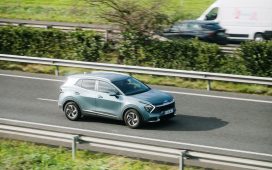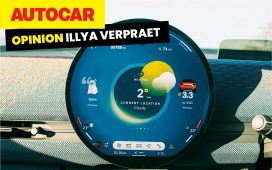Electric car icon. Electrical automobile cable plug charging green symbol. Eco friendly electric … [+]
Automakers must slash electric car prices, weight and battery size, and concentrate on the short-range work electric cars do best. Sales would boom, huge subsidies would disappear, and the costly requirement for a massive charging network could be postponed.
Most motorists in Europe could rent a big diesel for rare long-range journeys.
Electric car competence is becoming an issue in Britain because by 2030 the government has decreed no new vehicles powered by internal combustion engines (ICE) will be allowed to be sold as part of its Net Zero CO2 by 2050 policy. Most of the rest of Europe will face a similar crisis in 2035. Britons are slowly waking up to the fact they will have to buy electric in less than 7-years and are paying increasing attention to what life will be like if they buy a battery electric vehicle (BEV).
Mounting fears about the ban have spurred many negative stories in the British media. During the Christmas holiday, there were reports from all over Britain of long lines of Teslas waiting for hours to find an available charger.
The Dacia Spring Electric is made in China for this Renault subsidiary. (Photo by ERIC PIERMONT/AFP … [+]
Stories about how various people have been led down by their electric cars are starting to appear. This might be unfair, but once an idea has gained momentum, it’s very difficult to dislodge.
Giles Coren, star restaurant critic and columnist of The Times and Sunday Times is so exasperated with his Jaguar I-Pace BEV, he’s selling it and going back to diesel. Coren was almost hysterical in lamenting the multiple failures of his I-Pace in a column. He was particularly miffed by Jaguar’s claim the range was “up to 292 miles when it was never more than 220 miles. Why electric carmakers are allowed to tell these lies is a mystery to me,” Coren said. My own experience with the I-Pace (see data box) found it averaged 248 miles per refill and had a range of just under 170 miles on the highway.
Iain Dale, stalwart of British talk radio station LBC, has been lamenting his electric car experience.
“I bought it (Audi e-tron) just over a year ago but have hated the thing almost since Day 1. On top of the mis-selling of the range it could actually achieve, my experience was that even if you planned your journey properly, and worked out where you should recharge, long journeys were fraught with difficulty. In a year of owning the car I only travelled 5,000 miles in it. I’ve handed it back and replaced it with another diesel car,” Dale said last month.
“Environmentalists may howl at me, but until the electric car infrastructure is fit for purpose, I suspect that the only people happy with their electric cars will be people who drive short distances,” Dale said in a Daily Telegraph column.
El;ectric car range tests
My experience of an Audi e-tron (see databox) showed an average charge capacity of 180 miles compared with the claim of 241 miles. It had a range in high-speed cruise mode of less than 140 miles. This was priced at £90,000 ($110,000).
All the 23 participants in my electric car tests would be terrific town cars but with nothing cheaper than £30,000 ($37,000) and an average of probably close to £50,000 ($61,000), that’s a lot of money for what is really a utility vehicle. The only participants which could offer over 200 miles of non-stop fast-lane cruising were the Tesla Model 3 and Kia Soul. And the highway data doesn’t allow for the fact sensible drivers would make sure they refilled before the range available dipped below 50 miles. Some electric car enthusiasts tell me I should slow down, but if you pay £90,000 for a car you expect it to at least match current technology. All these figures would be much worse if the cars were driven in mainland Europe, where the speed limits are higher than in Britain. There are no limits in some parts of Germany.
So it’s small cars to the rescue. Imagine a small vehicle, a golf cart with windows perhaps. It would perform 90% of the roles we demand from our sedans and SUVs – commuting, shopping, the school run – and cost around $10,000 after tax. It would be a two-seater with room for two children in the back. Its maximum speed would be 60 mph and its range 100 miles. The battery would be small and take about 4 hours to charge overnight from your home charger.
Wuling Hongguang Mini EV from SAIC-GM-Wuling Automobile. (Photo by Yu Fangping/VCG via Getty Images)
Because these vehicles are not designed for long-distance travel, it would hardly ever have to use high-speed chargers on motorways.
And this vehicle could soon be available in Europe. In China, the Hongguang MINI sells in huge numbers. It costs about $5,000. If it was upgraded to European Union (EU) safety standards it would cost say, $10,000. At this price these little cars might well capture the public’s imagination and inspire sales because of their obvious merits. A bit like early mobile phones which soared in popularity with no need for taxpayer largesse.
The European industry still insists on designing magnificent but flawed vehicles and shows no interest in scaling down, not least because profits are miniscule for small cars. EU regulations favor the development of huge and heavy electric vehicles and offer no incentives to make small ones. And small doesn’t have to mean a compromise in safety because I exclude so-called quadricycles like the Renault Mobilize Duo, Citroen Ami and Microlino.
Unless European carmakers change direction quickly, we will see the crisis developing as predicted by Stellantis, the huge conglomerate resulting from the merger of France’s Peugeot-Citroen and Fiat Chrysler.
Stellantis CEO Carlos Tavares believes because the long-promised affordable electric car is further away today than ever, there is a risk that average wage earners will no longer be able to afford to buy new cars. They will be forced to ride buses, trains, and bikes, thus guaranteeing a growing rump of European citizens with grievances against their governments.
Tavares says it’s asking for trouble to create a society where only the well-heeled can afford cars and SUVs.
Patrick Koller, CEO of French automotive components supplier Forvia agrees that Europe requires much cheaper electric vehicles and failure to achieve this will derail the right to mobility in Western democracies. He said European automakers must develop affordable small battery-electric vehicles for urban use.
“We don’t know how to make small cars with affordable batteries. China knows it,” Koller was quoted by Automotive News Europe as saying at the Las Vegas CES show.
Forvia was formed last year by Faurecia’s acquisition of Hella.
If nothing is done, the European automotive industry will jeopardize its mass market position as well as premium sales now being attacked by expensive products from China’s BYD and Geely.
There is no sign the industry foresees any trouble ahead, with sales forecasts assuming a steady, all-conquering role for BEVs.
Schmidt Automotive Research says BEV sales growth in Western Europe slowed in 2022 and will stagnate in 2023 at around 1.5 million and a market share of 14.5%. Sales will surge to 2.7 million in 2025 (20.0% share) and to 9.2 million (65.0%) in 2030.
Investment researcher Jefferies expects sales in the 27-nation EU to reach 3.9 million (market share 31.4%) in 2025, up from just over 1-1/2 million (13.1%) in 2022. BEV sales then accelerate to just under 10 million (75.9%) in 2030 and 12.7 million (94.4%) in 2035.
And Britain is committed to the 2030 ban on new ICE vehicle sales introduced by former Prime Minister Boris Johnson, famous for making grand claims which never actually moved the goalposts. After his removal last year, many industry observers expected this virtue-signalling might be quietly delayed until 2035. There’s has been no evidence so far that this might happen.











